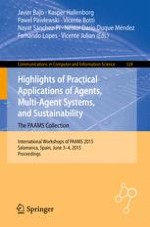2015 | Book
Highlights of Practical Applications of Agents, Multi-Agent Systems, and Sustainability - The PAAMS Collection
International Workshops of PAAMS 2015, Salamanca, Spain, June 3-4, 2015. Proceedings
Editors: Javier Bajo, Kasper Hallenborg, Pawel Pawlewski, Vicente Botti, Nayat Sánchez-Pi, Nestor Darío Duque Méndez, Fernando Lopes, Vicente Julian
Publisher: Springer International Publishing
Book Series : Communications in Computer and Information Science
